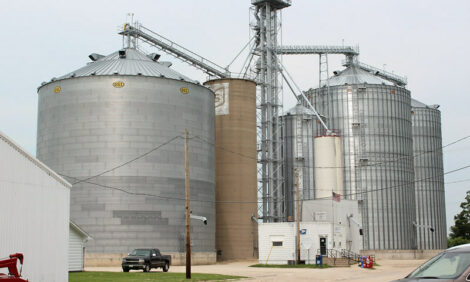



Brian Roe's February 2007 Livestock Outlook
US - Cattle: Feeder Prices Drop – Will They Drop Further?Brian Roe
Associate Professor
Ohio State University
Unfortunately, for those contrarians – those fall calving herds who count on the late winter price spike to make going against the grain worth the trouble – this is an unusual year. At the beginning of January, lightweight feeder cattle were selling at Kentucky auctions for about $17 to $18 less per hundredweight than they were a year earlier and for about $10 to $12 less than they were during October of 2006. By early February, prices declined by another $4 to $5 and my projections suggest that prices will continue to decline by another $5 to $10 over the next couple of months.
The explanation for the price decline has several obvious reasons – high corn prices, unfavorable western grazing conditions, and slow movement of cattle into and out of western feedlots due to the fury of winter in the plains. The swelling of corn prices predate the winter weather issues, and are important driver of recent feeder cattle price trends. With corn prices soaring, lightweight feeder cattle become like Hummer’s during an energy crisis – too expensive to fill up. In case you don’t remember, during 1996, when corn averaged $3.60 and spiked near $5.00 per bushel, 300-400 pound feeder cattle sold for an average of $57/cwt for the year.
The good news is that, despite futures prices for corn being around $4 for the next year, 300-400 pound feeder steers are still trading around $115, which is higher than any price observed prior to 2005. This is considerably lower than the last two years, however, and the price will likely decline further. Why is it likely to decline? Well, lightweight feeders are still selling at a considerable price premium compared to heavier feeders. For Kentucky auction steers, the difference in price between the light (300-400#) and heavy (700-800#) cattle still stands at about $30. In 1995, when corn averaged $2.80, the premium for lightweights shrunk to $16 and in 1996, when corn averaged $3.60, the premium was a mere $4. Since corn prices began to soar last fall, the price premium has not shrunk at all.
This suggests that the premium for lightweight calves will shrink during the next year. There are two ways the premium could shrink. The price of heavier feeders could increase (don’t hold your breath) or, more likely, the price of lighter feeders will continue to drop. If fall calving operations have calves ready for market, there may still be a window to market these in the next month before lightweight prices plunge too much further. Otherwise operators have to consider if they can add weight to these calves in a more cost effective way than can the back grounders or feedlots that are their typical buyers. If operators have their own corn, they may consider finishing these animals themselves as the prices for fed cattle have remained quite strong. Given the high price of corn, however, these operators need to put pencil to paper to determine if their scarce corn will fetch more marketed through cattle or through the ethanol plant.
Fed cattle markets remain strong, and I continue to worry that futures prices for the April and June contracts paint too rosy of a picture. This market has been moved greatly by the troubling weather events that have mired western feedlots. Undoubtedly this will have a negative impact of the number and weight of cattle emerging from the west. However, I still believe that markets have over-reacted. For example, the April contract recent traded around $94.50. My calculations suggest that, if demand for finished cattle is exactly as strong as last year, the total supply of beef in April (# head times carcass weight) would have to be 8% below last year.
Is an 8% decline in April supplies in the cards? USDA projects supply in the April-June quarter to be 1.5% higher than last year, though this estimate may not take into account the weather events of the last 4 weeks. Nonetheless, feedlot inventories for January were at record levels as were the number of cattle on feed for more the 120 days. Even if the recent weather events move supply from a projection of +1.5% to -5%, I still see prices to be about $5 too high if demand is unchanged from last year. A similar situation holds for June – USDA projects supply to +1.5%. In order for June prices to meet the $91 futures prices recently traded on the Chicago Mercantile Exchange, the supply would have to drop to a 5% decrease if demand is unchanged from last year. Needless to say, I see these recent prices as a good opportunity to hedge feedlot sales for the spring. Furthermore, I see no such undue optimism in the August, October or December futures prices.
TheCattleSite News Desk


